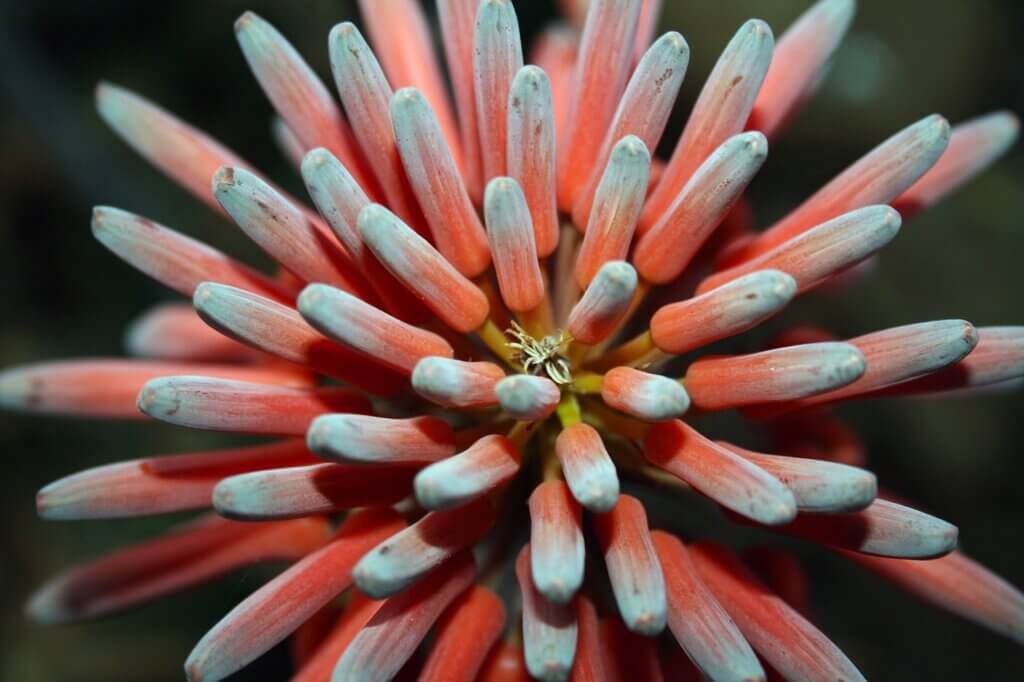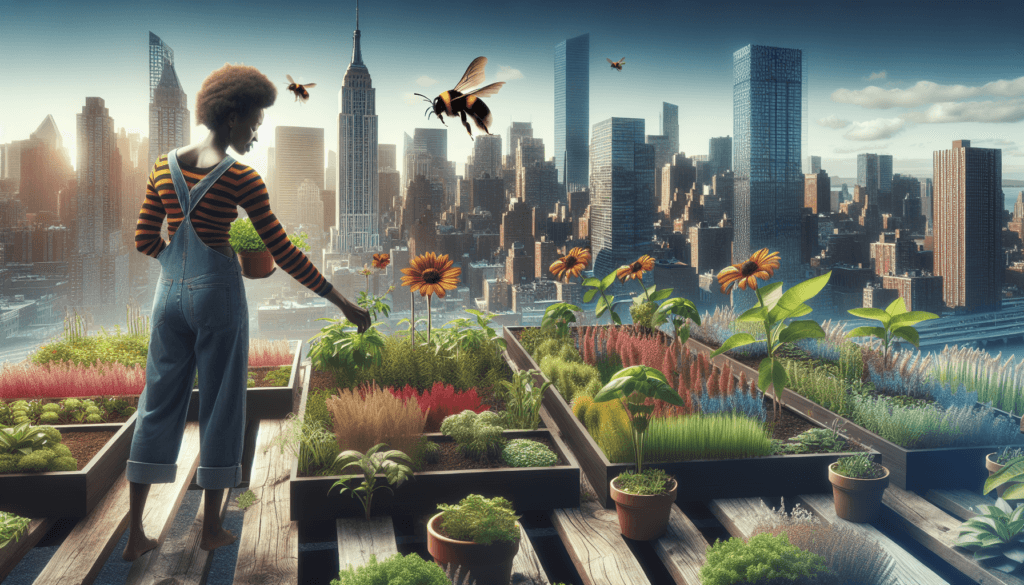Are you interested in transforming your urban space into a flourishing oasis that respects and honors Indigenous traditions? Look no further! In this article, we will explore the benefits and techniques of integrating Indigenous gardening practices within an urban setting. Harness the knowledge passed down through generations and tap into nature’s wisdom to create a symbiotic relationship between humans and the environment. Discover how to cultivate a thriving garden that fosters biodiversity, promotes sustainable practices, and celebrates the rich cultural heritage of Indigenous communities. With a touch of Indigenous wisdom, your urban garden will blossom into a vibrant tapestry of color, life, and harmony.
Benefits of Indigenous Gardening Practices
Increased biodiversity
Implementing indigenous gardening practices in urban settings can greatly contribute to increased biodiversity. Indigenous gardeners prioritize planting native plant species, which attract and support a wide range of local fauna such as birds, insects, and small mammals. These gardens create diverse ecosystems that provide habitats and food sources for species that might otherwise struggle to survive in urban environments. By increasing biodiversity, indigenous gardening practices help maintain the balance of ecological systems and promote a healthier urban environment for all.
Preservation of native plant species
One of the key benefits of indigenous gardening practices is the preservation of native plant species. Indigenous gardeners often prioritize the use of plants that are native to the region, which helps preserve the genetic diversity and cultural significance of these plants. By incorporating native plants into urban gardens, we can protect and promote the survival of plant species that are adapted to the local climate, soil conditions, and other environmental factors. This preservation effort is crucial for maintaining the ecological and cultural integrity of our urban landscapes.
Improved soil health
Indigenous gardening practices place a strong emphasis on soil health and fertility. Traditional methods such as companion planting, crop rotation, and organic mulching help to enrich the soil and promote its long-term health. By avoiding the use of chemical fertilizers and pesticides, indigenous gardeners protect the soil from degradation and contamination. Additionally, these practices encourage the growth of beneficial soil microorganisms, which further enhance soil health and nutrient cycling. As a result, the implementation of indigenous gardening techniques can lead to healthier, more fertile urban soils that support vibrant plant growth and sustainable food production.
Challenges of Implementing Indigenous Gardening Practices in Urban Settings
Limited space
One of the primary challenges in implementing indigenous gardening practices in urban settings is the limited amount of space available. Urban areas are often characterized by high population density and limited green spaces. However, even in small spaces, it is possible to design and establish indigenous gardens. Innovative gardening techniques such as vertical gardening, rooftop gardens, and community gardens can be utilized to maximize space utilization and create thriving indigenous gardens within urban landscapes.
Limited knowledge and awareness
Another challenge is the limited knowledge and awareness of indigenous gardening practices among urban communities. Many people may be unfamiliar with the ecological and cultural significance of indigenous gardening techniques. To overcome this challenge, educational initiatives such as workshops, seminars, and informational materials can be developed to educate the public about the benefits and techniques of indigenous gardening. By raising awareness and providing accessible information, communities can be empowered to integrate these practices into their urban environments.
Lack of resources and funding
The lack of resources and funding can also present a barrier to the implementation of indigenous gardening practices in urban settings. Establishing and maintaining indigenous gardens may require financial support for acquiring native plant species, gardening tools and materials, and infrastructure development. Securing funding from local governments, organizations, and community partnerships is essential to overcome this challenge. Additionally, resource-sharing networks and community-led initiatives can help offset the lack of individual resources and foster a collective effort towards creating and maintaining indigenous gardens in urban areas.

Designing an Indigenous Garden in an Urban Setting
Researching native plant species
Designing an indigenous garden in an urban setting begins with thorough research on native plant species that are suitable for the local climate, soil conditions, and available space. Consulting with indigenous communities and organizations can provide valuable insights on traditional plant species that have ecological and cultural significance. It is important to select a diverse range of plants that offer varying bloom times, heights, and habitat features to create a visually appealing and ecologically rich garden.
Creating diverse habitats
An important aspect of designing an indigenous garden is creating diverse habitats to support a wide range of species. This can be achieved by incorporating different plant heights, textures, and structures that provide nesting sites, food sources, and shelter for various organisms. For example, incorporating native grasses, shrubs, and trees can create different layers within the garden, mimicking natural habitats and supporting a diverse community of birds, insects, and other wildlife.
Utilizing vertical gardening techniques
In urban settings with limited horizontal space, utilizing vertical gardening techniques can help maximize the available area for indigenous gardens. Vertical gardens can be created by utilizing trellises, living walls, or vertical planters. These techniques allow for the growth of climbing plants, vines, and trailing species, providing additional habitat opportunities while utilizing minimal ground space. By thinking creatively and making use of vertical gardening techniques, urban gardens can thrive even in the most limited spaces.
Adapting Indigenous Gardening Techniques for Urban Environments
Urban composting methods
Composting is an essential aspect of indigenous gardening practices, as it helps to recycle organic waste and enhance soil fertility. In urban environments, where space may be limited, compact composting methods such as worm composting or vermicomposting can be utilized. These methods involve the use of specialized containers that can be easily maintained within small spaces, such as balconies or backyard corners. By composting kitchen scraps and garden waste, urban gardeners can create nutrient-rich soil amendments to support the health and productivity of their indigenous gardens.
Rainwater harvesting
Water scarcity is a concern in many urban areas, making water conservation crucial for sustainable gardening practices. Indigenous gardeners have long utilized rainwater harvesting techniques to minimize water waste and reliance on municipal water supplies. Urban gardeners can adapt these techniques by installing rain barrels or cisterns to collect and store rainwater for garden irrigation. Using collected rainwater not only conserves water resources but also ensures that plants receive non-chlorinated, natural water that is conducive to their growth and health.
Use of natural pest control methods
Indigenous gardening practices traditionally rely on natural pest control methods to maintain garden health. These methods include intercropping, companion planting, and the use of organic pest deterrents such as neem oil or garlic spray. Urban gardeners can adopt these practices to minimize the use of chemical pesticides and promote a balanced ecosystem within their gardens. By encouraging beneficial insect populations and creating habitats for natural predators, indigenous gardeners can effectively manage pests while minimizing harm to the environment and human health.

Engaging the Community
Educational workshops and seminars
Engaging the community through educational workshops and seminars can play a vital role in promoting indigenous gardening practices in urban settings. By organizing these events, communities can learn about the benefits of indigenous gardening, gain practical knowledge of techniques, and have the opportunity to connect with experienced indigenous gardeners and experts. These educational initiatives can empower individuals to incorporate these practices into their own homes and community spaces, fostering a culture of sustainable gardening and environmental stewardship.
Creating community garden spaces
Creating community garden spaces is an effective way to engage the community and provide opportunities for collective gardening experiences. These shared spaces can serve as demonstration gardens where indigenous gardening techniques are showcased and community members can actively participate in the planting and maintenance of the garden. Community garden spaces allow for knowledge-sharing, collaboration, and the development of a supportive network among urban gardeners, fostering a sense of community pride and ownership.
Partnerships with Indigenous communities
To ensure the authenticity and cultural integrity of indigenous gardening practices, it is important to establish partnerships with local Indigenous communities. These partnerships facilitate the exchange of knowledge, guidance, and cultural protocols related to indigenous gardening. Collaborating with Indigenous communities not only strengthens the implementation of indigenous gardening practices but also fosters mutual respect, cultural exchange, and recognition of Indigenous knowledge and land stewardship practices.
Incorporating Indigenous Knowledge and Cultural Practices
Honoring traditional land stewardship practices
Incorporating indigenous gardening practices in urban settings should honor traditional land stewardship practices and the cultural significance of gardening. Indigenous communities have long-standing relationships with the land and have developed sustainable practices that respect ecosystem dynamics. By recognizing and integrating these practices, urban gardeners can promote the importance of cultural heritage, demonstrate respect for Indigenous knowledge systems, and contribute to the preservation of Indigenous cultural identities.
Respecting cultural protocols and ceremonies
Indigenous gardening is often intertwined with cultural protocols and ceremonies that have been passed down through generations. It is essential to respect and uphold these protocols when implementing indigenous gardening practices in urban settings. Consulting with local Indigenous communities and Elders can provide guidance on appropriate rituals, ceremonies, and cultural practices to be observed. Respecting these traditions helps to maintain the authenticity and integrity of indigenous gardening and fosters a deeper understanding and appreciation of Indigenous cultures.
Fostering cultural exchange and learning
Incorporating indigenous gardening practices in urban environments is an opportunity for cultural exchange and learning. By engaging with Indigenous communities and individuals, urban gardeners can not only gain knowledge and skills related to traditional gardening practices but also deepen their understanding of Indigenous cultures and histories. This cultural exchange promotes inclusivity, diversity, and a sense of shared responsibility for environmental stewardship. It enriches urban communities by fostering mutual respect, collaboration, and a broader perspective on sustainable living.

Examples of Successful Indigenous Gardens in Urban Settings
The Native Plant Garden in New York City
The Native Plant Garden in New York City’s Bronx Botanical Garden is an exemplary indigenous garden in an urban setting. This garden showcases a wide variety of native plant species, providing essential habitat resources for local wildlife. It serves as an educational space where visitors can learn about the importance of indigenous gardening and its contribution to biodiversity conservation and urban greening initiatives.
The City of Edmonton’s Indigenous Garden
The City of Edmonton in Canada hosts an Indigenous Garden that celebrates the traditional knowledge and cultural significance of indigenous gardening practices. This garden incorporates traditional plant species, designs, and artworks, providing residents and visitors with an immersive experience of Indigenous culture and environmental stewardship. It serves as a platform for education, community engagement, and dialogue between Indigenous communities and the urban population.
The Gardens for All project in Vancouver
The Gardens for All project in Vancouver, British Columbia, aims to create inclusive garden spaces that promote the integration of indigenous gardening practices within urban communities. This project utilizes public and community gardens to foster collaboration, knowledge-sharing, and the celebration of Indigenous cultures. By engaging diverse community members in indigenous gardening, the project promotes social cohesion, mutual learning, and the creation of sustainable urban environments.
Policy and Planning Considerations
Including Indigenous gardening in urban planning
To support the integration of indigenous gardening practices, it is crucial to include them in urban planning processes. Incorporating indigenous gardening as a key component in urban greening strategies, zoning plans, and land-use policies can help create supportive environments for the establishment and maintenance of indigenous gardens. By highlighting the ecological and cultural value of these practices, municipalities can encourage and incentivize the adoption of indigenous gardening within their jurisdictions.
Supporting community-led initiatives
Supporting community-led initiatives is essential for the successful implementation of indigenous gardening practices in urban settings. Municipalities can provide resources, funding, and technical support for community-driven projects that aim to establish indigenous gardens. By prioritizing and empowering community-led initiatives, local governments can foster grassroots engagement, promote social equity, and ensure that indigenous gardening practices are tailored to the specific needs and aspirations of urban communities.
Incorporating Indigenous perspectives in municipal policies
To promote inclusivity, diversity, and the recognition of Indigenous knowledge and perspectives, municipalities should incorporate Indigenous voices and perspectives in the development of municipal policies related to gardening, urban agriculture, and environmental stewardship. By incorporating Indigenous perspectives into decision-making processes, policy development can be more holistic, culturally sensitive, and responsive to the needs and aspirations of Indigenous communities. This ensures that indigenous gardening practices are integrated in a manner that respects Indigenous rights, promotes social justice, and contributes to the overall well-being of urban communities.

Potential Benefits for Urban Communities
Enhanced connection to nature
Integrating indigenous gardening practices in urban settings offers significant benefits for urban communities, including an enhanced connection to nature. Indigenous gardens provide green spaces where residents can interact with native plant species, observe wildlife, and experience the therapeutic benefits of nature. This connection to nature promotes mental well-being, reduces stress, and nurtures a sense of environmental responsibility and stewardship among urban residents.
Improved mental and physical health
Engaging in indigenous gardening practices in urban environments contributes to improved mental and physical health. Gardening activities, such as planting, weeding, and harvesting, offer opportunities for physical exercise and outdoor recreation. The presence of green spaces also enhances air quality, reduces noise pollution, and provides a respite from the built environment. These elements collectively promote healthier lifestyles, improve overall well-being, and mitigate the impacts of urban living on mental and physical health.
Strengthened community ties
Indigenous gardening practices in urban communities can foster strengthened community ties. Collaborative gardening initiatives, such as community gardens or shared spaces, create opportunities for social interaction, knowledge-sharing, and collective problem-solving. By working together to establish and maintain indigenous gardens, community members develop a sense of shared purpose, pride, and ownership. This strengthens social bonds, promotes community resilience, and enhances the quality of life within urban neighborhoods.
Overcoming Barriers and Mobilizing Support
Advocacy and awareness raising
Advocacy and awareness raising are crucial for overcoming barriers and mobilizing support for the integration of indigenous gardening practices in urban environments. Community members, activists, and organizations can advocate for the inclusion of indigenous gardening in urban planning processes, raising awareness about the benefits and cultural significance of these practices. Through public outreach, educational campaigns, and media engagement, individuals and groups can mobilize support, generate public interest, and influence decision-makers to prioritize and invest in indigenous gardening initiatives.
Securing funding and resources
Securing funding and resources is essential to overcome financial barriers and sustain indigenous gardening initiatives. Urban gardeners and community organizations can seek grants, partnerships, and sponsorships to acquire the necessary resources for establishing and maintaining indigenous gardens. Collaboration with local governments, non-profit organizations, and businesses can provide financial support, in-kind donations, and technical expertise. By actively pursuing funding opportunities and mobilizing resources, communities can ensure the long-term viability and success of indigenous gardening projects.
Collaboration with local governments and organizations
Collaboration with local governments and organizations is instrumental in overcoming logistical and bureaucratic barriers to the implementation of indigenous gardening practices. Engaging in dialogue with municipal authorities, urban planners, and officials can promote the integration of indigenous gardening in urban policies, regulations, and development plans. Building strategic partnerships with organizations and institutions dedicated to environmental sustainability, cultural preservation, and social justice can provide additional resources, advocacy support, and a platform for community engagement. By fostering collaboration, communities can create a shared vision for implementing and sustaining indigenous gardening practices in urban environments.



